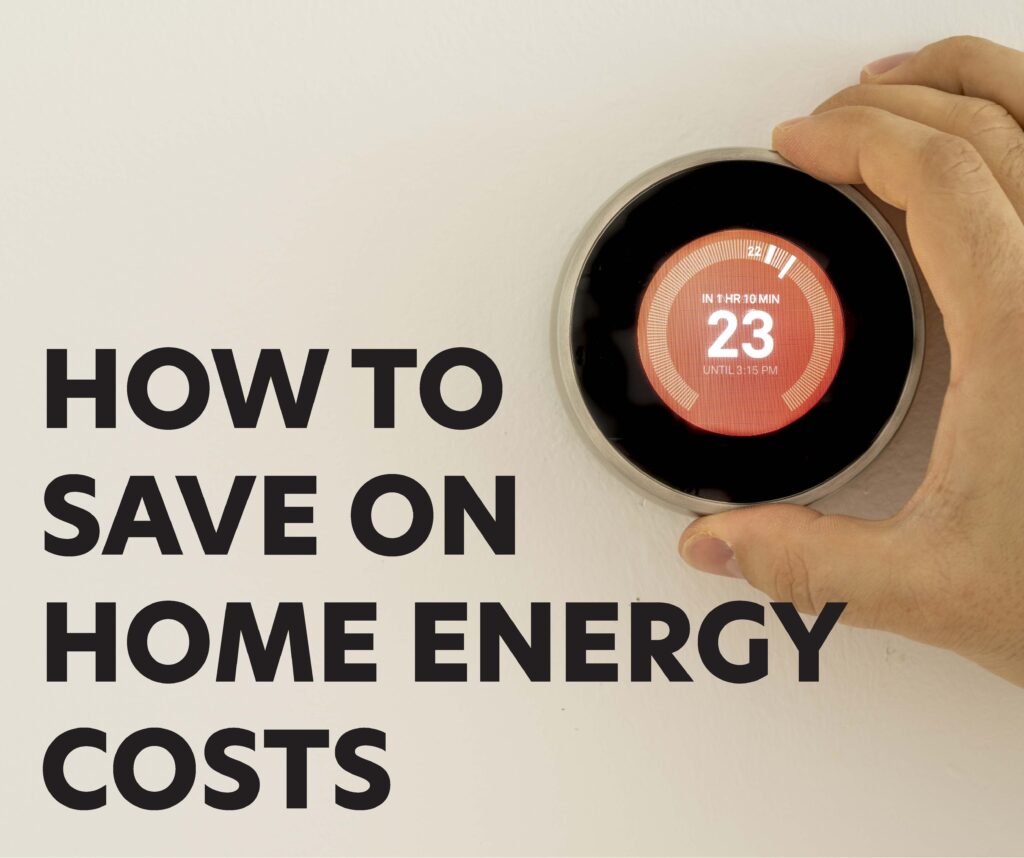
Whether your motives are to reduce your energy bill or your environmental footprint, there are many ways to save on energy costs in your home.
Before you make any changes, you should first assess your utility bills and conduct a home energy audit to identify how and where your home is losing energy. How do your heating and electric bills compare to previous years? What energy sources do you use the most?
If you don’t know where to start, the U.S. Department of Energy has some tips on ways to best assess your home’s energy use.
Here are 5 tips to help you make your home more energy-efficient.
1. LED Bulbs and Efficient Fixtures:
On average, U.S. Homes contain about 70 light bulbs. The bulbs you use can add up to big energy savings. Energy-efficient LED bulbs use up to 90% less energy than incandescent bulbs; they also last significantly longer and can save you more than $80 in electricity cost over the bulb’s lifetime.
But, your fixtures have hidden savings as well. Updating your old light fixtures to ENERGY STAR certified can result in 70%-90% less energy, produce 70% percent less heat. Energy-efficient fixtures will also last 15-25 times longer than standard fixtures.
With advances in design, energy-efficient bulbs and fixtures can be found in a variety of stylish models to match any home style. Upgrade them all at once or over time; either way you’ll reap major savings benefits.
2.Install a Smart Thermostat:
Investing in a smart, programmable thermostat can have a major impact on your heating and cooling use and costs. A smart thermostat can be set to automatically turn off or reduce heating and cooling during the times when you are asleep or away. Many include apps allowing you to adjust the temperature from anywhere. On average, a programmable thermostat can save you $180 per year. They also include indicators for when to replace air filters or HVAC system problems, which also improve the efficiency of your heating and cooling systems. When you install a programmable thermostat, you eliminate wasteful energy use from heating and cooling without upgrading your HVAC system.
3. Adjust Your Thermostat Wisely:
During colder weather, the U.S. Department of Energy suggests setting the thermostat to 68°F while you’re awake and at home for optimum efficiency. However, when you are asleep or out of the home, you can lower your thermostat just a few degrees and save even more on your bills. By turning your thermostat back 7°-10°F for eight hours a day from your normal setting, you can expect to save about 10 percent on heating.
4. Upgrade to Energy Star Efficient Windows:
Feeling a draft? Inefficient windows are one of the leading causes of high energy bills. Weather cracked, warped or drafty, or just outdated, repairing or replacing your windows can save hundreds in energy costs.
If your windows are newer, see if you can improve the efficiency of your windows by repairing broken seals and replacing any warped or broken frames.
However, if your home has older windows, replacing them with modern Energy Star rated windows are the way to go and you’ll reap the benefits of modern energy-saving technology. To find the best savings, first, look for the Energy Star logo. The average homeowner can save $101 to $583 a year on their heating and cooling costs by replacing single-pane windows with ENERGY STAR certified windows.4
Additionally, you’ll also want to read the National Fenestration Rating Council (NFRC) label that comes on all windows. The label shows two energy performance ratings: U-factor and solar heat gain coefficient (SHGC). The lower the number, the better, especially in temperate climates. The lower the numbers, the better the window is at insulating and keeping out solar heat.
5. Upgrade Your Appliances:
When buying appliances pay attention to the initial purchase price and the annual operating cost. Energy-efficient appliances may often have a higher upfront price point, but their operating costs are often 10-25% lower than standard models. Look for the ENERGY STAR label, which is a federal guarantee that the appliance will consume less energy during use and when on standby than standard models. Energy savings differ based on the specific appliance. For example, ENERGY STAR certified clothes washers consume 25% less energy and 45% less water than conventional ones, whereas ENERGY STAR refrigerators use only 9% less energy.






